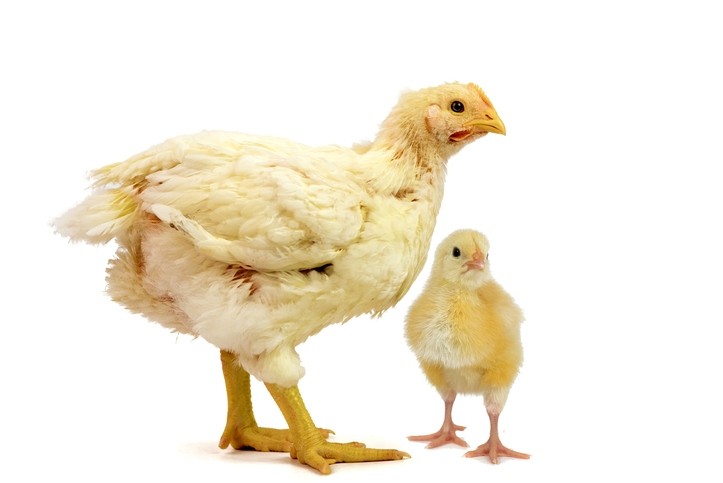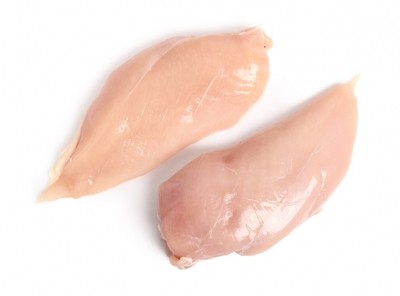Can valine supplementation retain growth performance in birds on low protein diets?

Valine reduced the impact of the lower CP diets through its beneficial effect on protein accretion and intestinal morphology, they said.
However, the addition of valine (Val) to lower CP broiler rations failed to improve the immune responses of the birds, found the study, published in Livestock Science.
Background
Formulation of diets with low crude protein (CP) content has been reported to reduce ammonia emission from poultry wastes and decrease diet costs (Blair et al., 1999; Corzo et al., 2008), said the researchers.
However, inferior growth performance of broilers can be the consequence of reduced protein rations, even if there are indispensable amino acids included (Bregendahl et al., 2002; Holsheimer and Janssen, 1991; Jensen, 1991), said the Iranian experts.
On the other hand, continued the researchers, several papers have shown that crystalline amino acid supplementation can fairly compensate partial CP reduction in diet of broiler diets (Han et al., 1992; Parr and Summers, 1991).
“We hypothesized that Val inclusion to either basal or low CP diets may influence gut development, growth performance and immune responses in broiler chickens.
“Thus, the objective of the current trial was to study the effect of dietary Val supplementation in either a basal diet or diets with or 85% or 90% of the CP requirement of broiler chickens on growth performance, the morphology of small intestine and immune responses in broiler chickens.”
Registration is open for the FeedNavigator Summit 2020: Young Animal Nutrition #YAN20, which runs over 2 days - 3 to 4 March 2020 - in Amsterdam, NL.
Method
Some 541day-old broiler chicks were purchased from a commercial broiler hatchery, weighed on arrival and randomly assigned to six dietary treatments and six replicates of 15 birds per pen based on a factorial arrangement of treatments (2× 3) in a completely randomized design, said the scientists.
The rations in the experiment included three diets with variation on the dietary crude protein requirement of Ross 308 broiler chickens, each supplemented with or without Val.
- 100% (CP100; starter: 217 g/kg, grower: 200 g/kg, finisher: 180 g/kg),
- 90% (CP90; starter: 195.3 g/kg, grower: 180 g/kg, finisher: 162 g/kg) and
- 85% (CP85; starter: 184.5 g/kg, grower: 170 g/kg, finisher: 153 g/kg)
Valine was added to the CP85 and CP90 diets in order to fulfil the Val requirement of Ross 308 broiler chickens in which CP85 contained 9 g/kg digestible Val in starter, 7.9 g/kg digestible Val in grower and 7.1 g/kg digestible Val in finisher period, they said.
CP90 contained 9 g/kg digestible Val in starter, 7.9 g/kg digestible Val in grower and 7.1 g/kg digestible Val in finisher periods, added the team.
Dietary treatments with various CP contents were formulated without synthetic amino acid supplementation other than DL-methionine, L-lysine and L-threonine. Diets were formulated to meet or exceed the nutrient requirements of broilers provided by Ross Broiler Manual except for Val and applied in different periods of the experiment, said the researchers.
Prior to the trial commencing, they said the feed ingredients were analyzed by Evonik Animal Nutrition analytical lab for amino acids.
Findings
The team saw that Val could restore the compromising effect of diets with 90% or 85% of the CP requirement of broiler chickens on the growth of broilers during the starter and growing phases equal to broilers receiving 100% CP, but such dietary supplementation failed to ameliorate the growth of broilers during the finishing and entire rearing periods.
The research team noted that the energy to protein ratio of the feed is increased as broilers age, so that proportion of dietary corn is increased in order to meet the growing demand of energy. Corn protein is greater in leucine content compared to isoleucine and Val which expands the chance of antagonism between leucine and Val and subsequently affects Val provision for broiler chickens (Ospina-Rojas et al., 2016)
“This might provide a clear evidence for the lack of Val impact on the growth of broilers fed on the low CP diets during the finishing period in this experiment.”
Supplementation of Val in low CP diets improved breast yield of broilers compared to those fed on non-supplemented CP90 and CP85 diets, they added.
Villus height to crypt depth ratio was higher in broilers receiving low CP diets supplemented with Val, they said. They noted that the total serum antioxidant activity decreased in broilers fed with CP90 compared to those received CP100.
“Val supplementation could not ameliorate the impaired serum antioxidant activity compared to CP100.”
Source: Livestock Science
DOI: https://doi.org/10.1016/j.livsci.2019.09.025
Title: Effect of dietary valine supplementation to low protein diets on performance, intestinal morphology and immune responses in broiler chickens
Authors: S. Allame, M. Toghyani












